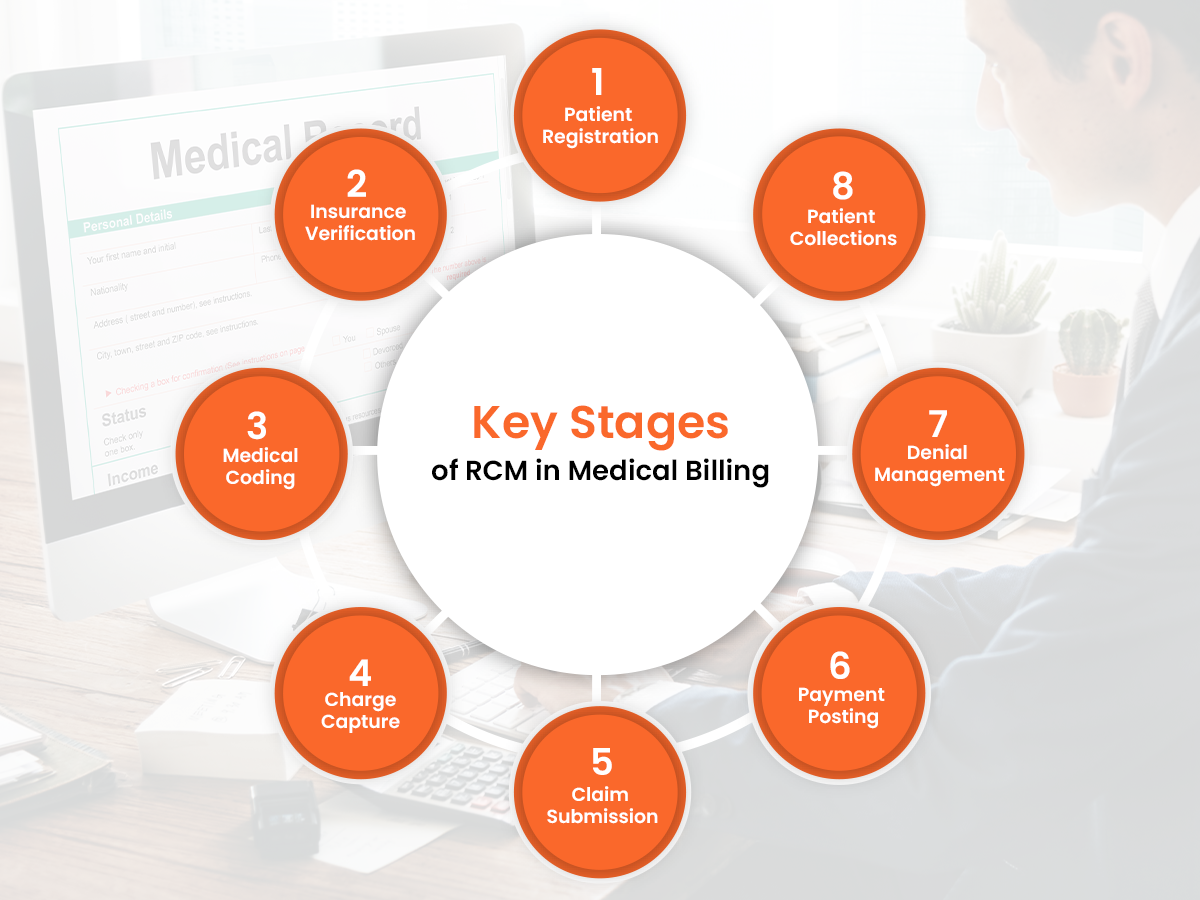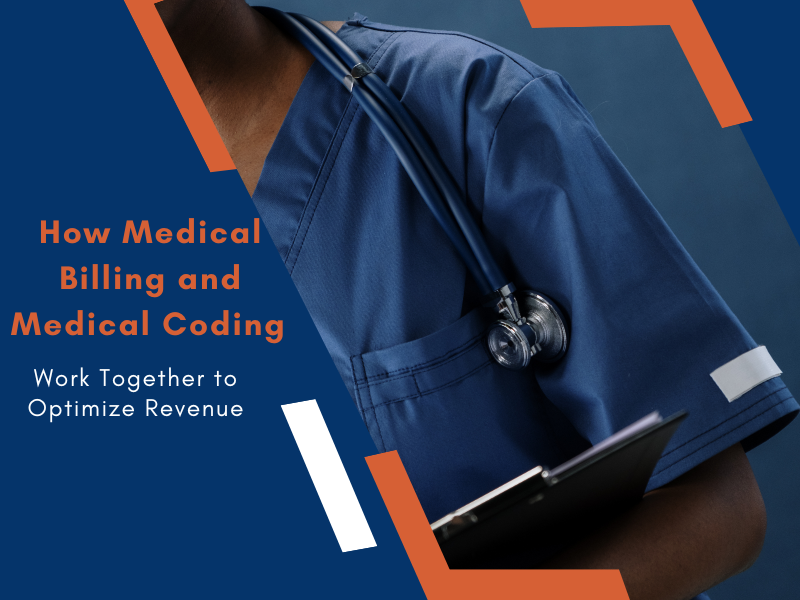Revenue Cycle Management (RCM) is at the core of financial stability in healthcare. For providers, RCM in medical billing is essential for streamlining operations, reducing costs, and optimizing patient experiences. In this blog, we’ll dive into what RCM is, its significance in medical billing, and how it can help healthcare providers maximize revenue while ensuring compliance.
What is Revenue Cycle Management (RCM) in Medical Billing?
Revenue Cycle Management (RCM) in medical billing is the end-to-end process that healthcare providers use to track patient care episodes from registration and appointment scheduling to final payment. By managing this cycle effectively, providers can reduce claim denials, accelerate reimbursements, and maintain a steady cash flow.
In essence, RCM is the backbone of a healthcare provider’s financial performance. The process typically includes everything from verifying patient insurance, coding claims, processing payments, and resolving any outstanding billing issues.
Key Stages of RCM in Medical Billing
To understand the impact of RCM in medical billing, let’s break down its core stages:

- Patient Registration: The process starts when the patient schedules an appointment and provides their insurance and demographic details. Accurate registration ensures that claims are filed correctly from the start.
- Insurance Verification: Verifying a patient’s insurance coverage upfront helps avoid claim denials. It’s essential to check policy validity, coverage, and prior authorization requirements, if any.
- Medical Coding: Proper coding translates medical procedures and diagnoses into standardized codes. Accurate coding is critical to ensure claims are accepted and processed quickly.
- Charge Capture: This step involves capturing the cost associated with the patient’s services, which forms the basis of billing.
- Claim Submission: After coding, claims are sent to insurers. A well-managed claim submission process can significantly reduce the risk of rejection or denial.
- Payment Posting: Once the insurer pays, payment posting records the payment against the patient’s account, ensuring accurate billing.
- Denial Management: Addressing rejected claims quickly is essential for maintaining cash flow. Denial management involves identifying the reason for the rejection and resubmitting claims after correction.
- Patient Collections: Once insurance payments are received, patients are billed for any remaining balance. Efficient patient collections ensure that revenue isn’t left uncollected.
Why RCM is Crucial in Medical Billing
RCM in medical billing offers multiple benefits that impact healthcare providers and patients alike:
- Improved Cash Flow: Effective RCM reduces claim denials and speeds up reimbursements, ensuring a more predictable revenue stream.
- Higher Patient Satisfaction: When billing is accurate, patients receive fewer unexpected bills, leading to a better overall experience.
- Reduced Administrative Burden: A well-integrated RCM system reduces the workload on administrative staff by automating billing processes.
- Enhanced Compliance: By adhering to billing standards and insurance requirements, RCM helps providers avoid penalties and remain compliant.
Data-Driven Decisions: RCM systems provide valuable insights into billing patterns and revenue trends, empowering providers to make informed financial decisions.
Common Challenges in RCM and How to Overcome Them
While RCM in medical billing has clear benefits, it can also pose several challenges:
- Coding Errors: Incorrect coding is a leading cause of claim denials. Solution: Invest in training or software to ensure up-to-date and accurate coding practices.
- Claim Denials: Handling denials can slow down revenue collection. Solution: Implement a proactive denial management system to track, analyze, and address claim denials efficiently.
- Compliance Issues: Staying compliant with billing regulations can be complex. Solution: Regular audits and RCM software with built-in compliance features can help ensure adherence to standards.
- Patient Responsibility Collection: Patients often struggle with complex bills. Solution: Transparent billing and multiple payment options make it easier for patients to settle their dues.
Tips to Optimize RCM in Medical Billing
Here are some tips to streamline RCM in medical billing:
- Leverage Automation: Automation in RCM systems helps reduce human error, speeds up claims processing, and allows staff to focus on more complex tasks.
- Invest in Staff Training: Ensure that your staff understands coding, billing, and compliance standards to minimize errors.
- Use Data Analytics: Analyzing RCM data can reveal trends in denials and other issues, allowing for proactive improvements.
- Establish Clear Patient Communication: Inform patients about their financial responsibility upfront to reduce billing issues later.
- Regularly Audit Your RCM Process: Routine audits can help you identify inefficiencies and ensure compliance, ultimately enhancing the RCM process.
The Role of Technology in Modern RCM
Technology is revolutionizing RCM in medical billing by automating processes, reducing errors, and enhancing compliance. Here’s how:
- Electronic Health Records (EHRs): EHRs can streamline patient data, reducing registration errors.
- Coding Software: Automated coding software minimizes human errors in the coding process.
- Payment Portals: Online payment portals allow patients to pay their bills easily, boosting patient collections.
- Analytics Tools: Data analytics tools help healthcare providers monitor revenue cycle performance and make data-driven improvements.
Conclusion
Effective Revenue Cycle Management (RCM) in medical billing is essential for the financial health of healthcare providers. From reducing claim denials to ensuring patient satisfaction, RCM brings numerous benefits. By understanding each stage, overcoming common challenges, and leveraging technology, providers can optimize their RCM processes, resulting in a smoother billing experience, stronger cash flow, and improved operational efficiency.
Whether you’re a small clinic or a large hospital, focusing on RCM can lead to sustainable growth and a better experience for both patients and staff.





